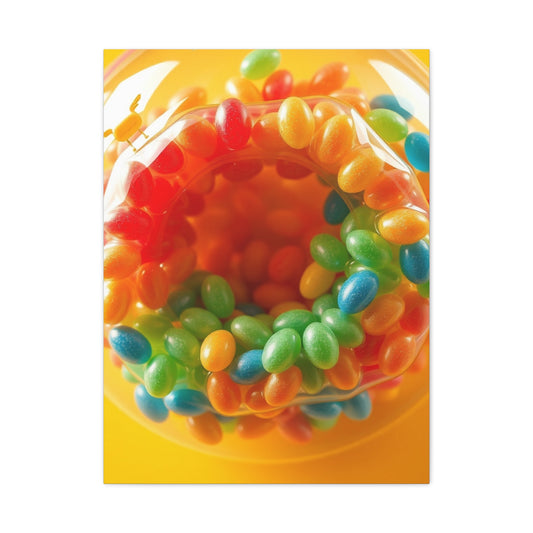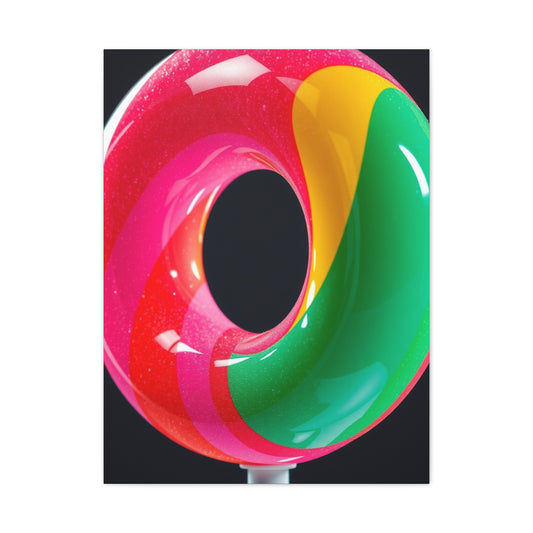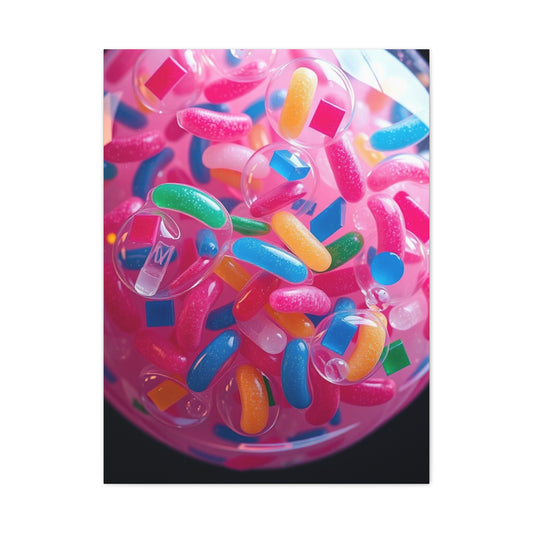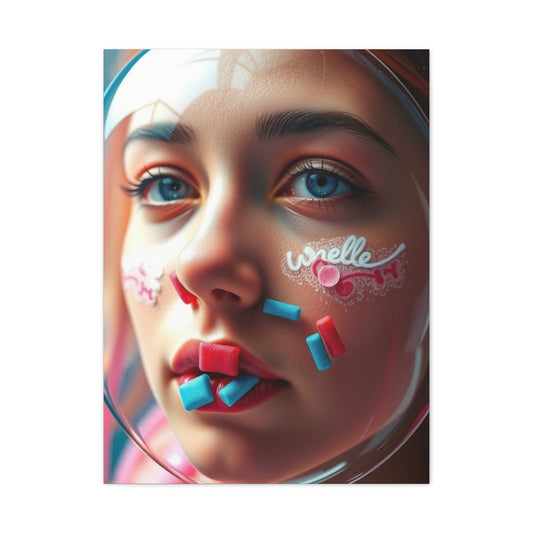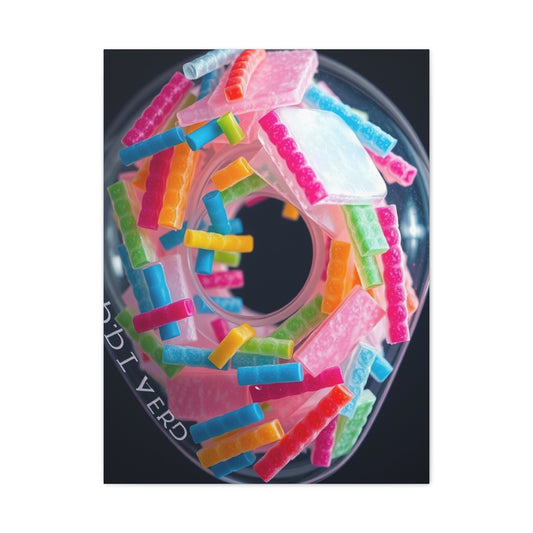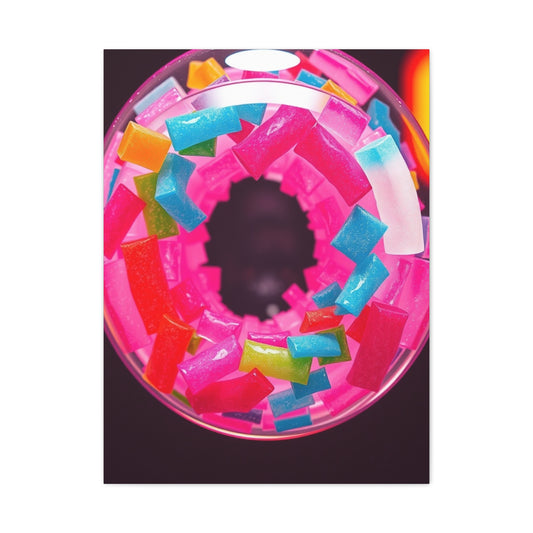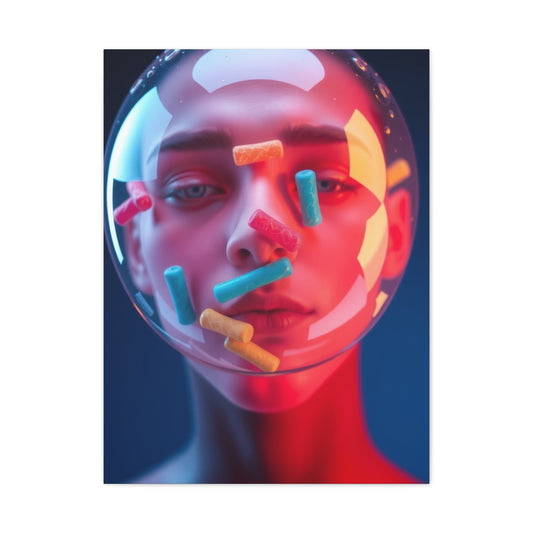Exploring Seattle’s Iconic Bubble Gum Wall Art
Seattle is a city celebrated for its creative energy, diverse cultural scene, and unconventional landmarks. While it boasts world-famous attractions such as the Space Needle and Pike Place Market, there is one quirky site that continues to capture the imagination of locals and tourists alike: the Bubble Gum Wall. Nestled in Post Alley beneath Pike Place Market, this vibrant installation may seem odd at first glance, but it has grown into one of Seattle’s most distinctive and beloved icons. More than just a wall covered in chewed gum, it has become a living, evolving artwork and a symbol of the city’s embrace of spontaneity and individuality.
The Bubble Gum Wall began in the early 1990s when theater patrons waiting in line for shows at the Market Theater began sticking used gum on the alley walls. At first, workers tried to scrape it off, but the gum kept returning in greater numbers. Eventually, the effort to clean the wall was abandoned, and what could have remained a nuisance instead transformed into a quirky community art project. Over time, thousands of colorful pieces of gum layered across the brickwork, creating a mosaic-like effect that turned the space into an unconventional yet mesmerizing display of collective creativity.
What makes the Bubble Gum Wall fascinating is its raw authenticity. Unlike curated art exhibits housed in galleries or museums, this installation is entirely public, organic, and continuously evolving. Each visitor adds a personal touch—whether it’s a simple wad of gum, a playful doodle shaped from chewy strands, or initials pressed into the sticky canvas. This shared act of contribution has transformed Post Alley into a collaborative artwork where the medium itself—chewing gum—is as unconventional as the idea behind it.
The wall also reflects the spirit of Seattle itself: bold, innovative, and unafraid to stand apart from the ordinary. Just as the city has nurtured groundbreaking contributions to technology, music, and coffee culture, it also finds ways to celebrate eccentricity. The Bubble Gum Wall may not carry the grandeur of an architectural landmark, yet it resonates deeply with visitors because of its accessibility. It reminds us that art doesn’t have to be polished, expensive, or formal to make an impact—it can be spontaneous, messy, and deeply human.
Tourists flock to the site not only to observe but also to participate, making the wall both an attraction and an interactive experience. Visitors often pose for photographs against the candy-colored backdrop, transforming the sticky surface into one of Seattle’s most Instagrammable spots. Couples sometimes leave their initials inside heart-shaped gum outlines, while friends compete to create the most creative or colorful additions. The result is an alleyway that constantly changes, a canvas that evolves with every contribution, capturing the essence of fleeting yet meaningful expressions.
The city has attempted to clean the wall a few times, most notably in 2015 when it was completely scrubbed down for maintenance. Yet within days, visitors began re-decorating it, reaffirming the wall’s place as a cherished, if unconventional, tradition. Its persistence shows how deeply it resonates with people as both an art form and a cultural marker.
Beyond its eccentric charm, the Bubble Gum Wall raises interesting questions about the very nature of art. Is art defined by intention, material, or setting? Here, discarded chewing gum—a substance usually seen as waste—becomes the medium for collective creativity. The transformation of something mundane into something meaningful highlights how art is ultimately about expression and connection. The wall serves as a reminder that beauty can emerge from unexpected places and that creativity thrives when barriers are removed.
The Fascinating Genesis of Seattle's Chewing Gum Phenomenon
The unusual yet captivating story of Seattle’s bubble gum wall art originates not from a carefully curated artistic vision, but from the humblest and most ordinary of human habits. Its creation was entirely accidental, unfolding as an act of casual disposal that gradually evolved into one of the city’s most beloved and unconventional artistic landmarks. The journey began in the early 1990s, specifically around 1993, when theatergoers at the Unexpected Productions Theater, located in Post Alley near Pike Place Market, stumbled into a new, unorthodox form of expression. While standing in line for performances, patrons, lacking nearby trash receptacles, began sticking their chewed gum onto the old brick walls lining the alley. At first, this act was nothing more than a quirky convenience—simply a way to get rid of gum before entering the theater.
What set these earliest contributions apart was their playful improvisation. Many individuals went beyond simply sticking gum to the wall. Some pressed spare coins into the sticky surfaces, while others shaped their discarded gum into little symbols, initials, or crude designs. The combination of bright colors, varying textures, and sparkling coins quickly drew attention, transforming what was initially an act of casual disposal into a visually intriguing display. These first few pieces of gum, perhaps no more than a dozen, occupied the lower stretches of the wall and appeared almost insignificant. Yet, they set into motion a ripple effect that would expand into a full-blown cultural phenomenon.
As more visitors encountered the gum-laden wall, they too began to contribute. The act of placing gum onto the wall became less about necessity and more about participation in something growing and collective. Tourists and locals alike found themselves intrigued by the oddity, and each new addition expanded the wall’s visual impact. Within a few short years, what had started as a handful of colorful spots had transformed into entire sections of Post Alley covered in gum, stretching higher and wider as contributors stretched, stacked, and layered their pieces atop those already stuck.
The phenomenon also reflected something deeper about the nature of public art and community interaction. Unlike traditional galleries or carefully curated murals, the gum wall had no single artist, no strict boundaries, and no official approval. It thrived entirely because of collective participation, embodying the spirit of spontaneous, democratic art. Anyone—whether a child visiting Pike Place for the first time, a tourist from overseas, or a local theater enthusiast—could contribute to this living canvas. In many ways, the gum wall stood as a grassroots rejection of exclusivity in art, replacing elitism with inclusivity and impermanence.
Despite its growing popularity, city officials initially attempted to remove the gum, viewing it as unsightly or unhygienic. Maintenance crews cleaned the wall several times during the 1990s, but the gum reappeared almost immediately, often in even greater quantities than before. It became clear that the wall had taken on a life of its own, fueled by the determination and playfulness of its contributors. Attempts to erase it only reinforced its significance as a collective artwork, proving that the public had claimed ownership of this unconventional installation.
By the late 1990s, the gum wall was no longer seen merely as a nuisance but as a legitimate cultural landmark. It grew to cover both sides of the alley in vibrant layers, with the gum taking on patterns, murals, names, and even sculptural forms. Its ever-changing appearance captured the energy of Seattle itself—a city known for its innovation, quirkiness, and embrace of unconventional ideas.
Architectural Canvas: Seattle’s Post Alley as a Living Gallery
When examining Seattle’s bubble gum wall art, it becomes clear that the choice of location plays as significant a role in its success as the contributions themselves. Post Alley, with its intimate dimensions and textured character, provides the perfect architectural framework for this quirky, ever-changing display. Unlike an open plaza or a highly polished surface, the alleyway offers a uniquely enclosed setting that transforms discarded chewing gum into a striking piece of participatory urban art.
Post Alley runs through the historic Pike Place Market, one of Seattle’s most iconic cultural hubs. Its placement is central yet tucked away, creating the feeling of stumbling upon a hidden treasure rather than walking directly into a curated tourist attraction. This atmosphere of discovery contributes greatly to the wall’s charm, as visitors often find themselves surprised by the sheer magnitude and intensity of the installation. Instead of being showcased in a museum or sanctioned gallery, the gum wall thrives in a raw, urban environment that reflects Seattle’s artistic embrace of the unconventional.
The physical structure of the alley itself adds another layer of significance. The old red brick, weathered by decades of city life, forms a rough and porous surface that serves as an ideal canvas for gum adhesion. Each groove in the mortar, each uneven brick face, provides small anchor points where gum can be pressed and molded into place. This textural quality ensures that the gum not only sticks but also takes on shapes and patterns influenced by the surface beneath it. Over time, these interactions between material and medium have created fascinating layers of artistic texture, where gum seems to grow organically from the walls rather than merely being plastered onto them.
Furthermore, the alley’s dimensions foster a uniquely immersive experience. Because it is relatively narrow, visitors cannot help but walk close to the walls. This proximity forces engagement with the artwork in a way that traditional galleries rarely achieve. On one level, viewers are struck by the overwhelming spectacle of thousands of brightly colored gum deposits creating a chaotic yet oddly beautiful mosaic. On another level, being so close allows them to notice small details: hearts carefully shaped from pink gum, initials carved into hardened pieces, miniature faces molded into chewy textures, and even layers of gum that have hardened into abstract sculptures over time. Post Alley functions less like a sterile exhibition hall and more like an intimate, tactile gallery where art can be examined at both the macro and micro level.
The alley’s location within Pike Place Market also ensures a never-ending flow of global contributors. Tourists from around the world come to Seattle, many with chewing gum in their pockets or purses, ready to add their personal imprint to the installation. Locals, too, often revisit the site, checking on their previous contributions or leaving new ones. This steady stream of visitors guarantees that the wall is never static; it is a constantly evolving artistic expression. What was once a modest patch of gum has grown into a sprawling, multilayered collage that represents the diversity and creativity of people who pass through Seattle. Each piece of gum, though insignificant in isolation, contributes to a collective tapestry of human expression.
Environmental conditions also play a crucial role. The narrowness of Post Alley creates a microclimate that protects the gum from rapid deterioration. Shielded from heavy rain and direct sunlight, the gum retains its vibrancy longer than it might in more exposed locations. This natural preservation allows the installation to flourish without requiring active maintenance, reinforcing its organic, spontaneous character.
The very fact that such a whimsical project can exist in such a central part of the city speaks volumes about Seattle’s cultural values. Post Alley demonstrates how ordinary architecture can become extraordinary when infused with community participation and artistic imagination. What might otherwise be an overlooked urban passageway has instead become a world-famous landmark, redefined by the countless hands (and mouths) of its contributors.
In this way, Post Alley itself is not just a backdrop but an active participant in the artwork. Its history, materiality, size, and location all shape the character of the gum wall, elevating it from a quirky oddity into a living gallery space. The alley is the frame, the surface, and the atmosphere all at once, ensuring that Seattle’s gum wall remains one of the most distinctive examples of accidental public art in the world.
Evolutionary Phases of the Gum Wall Masterpiece
The development of Seattle's bubble gum wall art has progressed through several distinct evolutionary phases, each characterized by unique aesthetic qualities, participation patterns, and artistic techniques. Understanding these phases provides insight into how community-driven art installations develop organically over time, responding to changing social dynamics, tourist patterns, and cultural influences.
During the initial phase, from 1993 to approximately 1996, the gum deposits remained relatively sparse and concentrated near the theater entrance. Contributors primarily focused on creating small, discrete additions that didn't compete for visual attention. The presence of coins embedded within many pieces suggested a ritualistic or commemorative aspect to the early participation.
The second phase witnessed explosive growth as word-of-mouth recommendations and early internet discussions began attracting curious visitors specifically seeking the unusual display. This period, spanning roughly from 1997 to 2005, saw the gum coverage expand dramatically along the alley walls, creating the first truly impressive visual impact that would eventually define the installation's reputation.
The contemporary phase, beginning around 2006 and continuing today, represents the mature form of the bubble gum wall art. During this era, contributors have developed increasingly sophisticated techniques for creating recognizable shapes, letters, and designs using their masticated medium. The installation now features intricate patterns, spell-out messages, and collaborative pieces that demonstrate remarkable creativity within the constraints of chewed gum as an artistic material.
Renaissance and Rapid Regeneration Following Restoration
The prediction proved remarkably accurate as visitors began contributing new gum pieces within days of the cleaning completion. The first post-cleaning contribution appeared as a simple peace symbol, created using strategically placed dots of colorful gum that served as a symbolic foundation for the installation's renaissance.
This initial gesture inspired others to participate, and within weeks, significant portions of the alley walls once again displayed vibrant gum decorations. The regeneration process proceeded at an accelerated pace, suggesting that the cleaning operation had actually increased public awareness and interest in the bubble gum wall art rather than diminishing its appeal.
The post-2015 iteration of the installation has demonstrated enhanced sophistication in both individual contributions and collaborative efforts. Contributors appear more conscious of their role in creating a cohesive artistic statement, resulting in improved color coordination, better spatial utilization, and more ambitious creative projects that span multiple wall sections.
Geographic Context: Seattle's Alternative Artistic Landscape
Seattle's bubble gum wall art exists within a broader cultural context that celebrates unconventional artistic expression and community-driven creative projects. The city's reputation for embracing alternative culture, from its legendary music scene to its innovative culinary traditions, provides fertile ground for installations that might struggle to gain acceptance in more conservative urban environments.
The Pike Place Market itself serves as a microcosm of Seattle's artistic diversity, featuring street performers, local artisans, and impromptu cultural events alongside traditional commercial activities. This environment normalizes creative expression in public spaces, making the bubble gum wall art feel like a natural extension of the market's creative ecosystem rather than an anomalous intrusion.
Furthermore, Seattle's tourism industry has embraced the city's quirky attractions as essential components of the authentic local experience. Visitors increasingly seek unique, Instagram-worthy destinations that offer opportunities for personal participation and creative expression, making the bubble gum wall art perfectly positioned to satisfy contemporary travel preferences.
Comparative Analysis: America's Other Gum Wall Installations
While Seattle's bubble gum wall art enjoys the greatest fame and recognition, similar installations exist in other American communities, each offering unique characteristics and cultural contexts that illuminate different aspects of participatory public art. These comparative examples provide valuable perspective on how geographic location, community demographics, and institutional support influence the development of unconventional artistic installations.
San Luis Obispo, California hosts Bubblegum Alley, perhaps the most direct parallel to Seattle's installation. This narrow passageway, located in the heart of the city's downtown commercial district, features gum coverage that extends from ground level to heights exceeding fifteen feet. The installation's proximity to California Polytechnic State University ensures a steady stream of young contributors who bring contemporary pop culture references and collegiate humor to their gum art.
The California installation differs significantly from Seattle's version in terms of color palette and artistic techniques. The warmer climate and intense sunlight create different preservation conditions, resulting in more muted tones and increased brittleness over time. Additionally, the college town demographic produces different types of contributions, with more emphasis on text-based messages, inside jokes, and temporary pop culture references.
Greenville, Ohio presents a third variation on the gum wall concept, located outside the historic Maid-Rite sandwich shop on North Broadway. This installation represents the smallest and most localized of the three major American gum walls, serving primarily as a community gathering point rather than a tourist destination. The intimate scale allows for more personal, family-oriented contributions, with many pieces representing multi-generational family traditions and local community celebrations.
The Ohio installation's connection to a specific business establishment creates different participation dynamics, as contributors often combine their gum art with patronage of the restaurant. This commercial connection has resulted in more stable institutional support and community acceptance, though it has also limited the installation's growth potential due to spatial constraints.
Scientific Perspectives:
From a materials science perspective, Seattle's bubble gum wall art represents a fascinating case study in how organic and synthetic materials interact with urban environmental conditions over extended periods. Modern chewing gum typically contains a synthetic gum base derived from petroleum products, combined with various sweeteners, flavorings, and colorants that create the vibrant hues visible in the installation.
The preservation characteristics of chewed gum in outdoor urban environments depend on numerous factors, including temperature fluctuations, moisture levels, air pollution, and direct sunlight exposure. Seattle's marine climate, characterized by moderate temperatures and high humidity, creates conditions that generally favor the preservation of gum's structural integrity and color retention compared to more extreme climatic conditions.
However, the same environmental factors that aid preservation also create challenges for long-term maintenance. The Pacific Northwest's frequent precipitation can cause water absorption and gradual softening of older gum deposits, while temperature variations can lead to expansion and contraction cycles that may compromise adhesion to the brick substrate.
Environmental considerations surrounding the bubble gum wall art encompass both positive and negative aspects. Critics argue that the installation represents a form of sanctioned littering that may encourage similar behavior in other public spaces. Additionally, the eventual decomposition or removal of gum materials raises questions about waste management and environmental responsibility.
Conversely, supporters contend that the controlled, localized nature of the installation actually serves environmental purposes by providing a designated space for gum disposal that prevents random littering throughout the broader Pike Place Market area. This perspective frames the bubble gum wall art as a form of environmental management rather than environmental degradation.
Community Participation and Collective Creation
The bubble gum wall art functions as a remarkable example of spontaneous community art creation, offering insights into how modern urban populations engage with public spaces and express collective creativity. Unlike traditional public art installations commissioned by institutions and created by professional artists, this phenomenon represents pure grassroots cultural expression driven entirely by individual initiative and voluntary participation.
The democratization of artistic participation inherent in the bubble gum wall art eliminates traditional barriers to creative expression, including artistic skill requirements, financial resources, and institutional approval. Any individual with access to chewing gum can contribute meaningfully to the installation, creating an exceptionally inclusive creative environment that transcends age, economic status, cultural background, and artistic experience.
This accessibility has resulted in contributions from an extraordinarily diverse population, creating a visual record of Seattle's demographic complexity and cultural richness. Children's simple dot patterns coexist with teenagers' elaborate letter formations, while adult visitors contribute more sophisticated designs that reflect mature artistic sensibilities and cultural references.
The temporal aspect of participation adds another dimension to the installation's cultural significance. Unlike static artworks that remain unchanged after completion, the bubble gum wall art continues evolving through ongoing contributions, creating a dynamic record of changing cultural trends, popular references, and community concerns over time.
Photographic Documentation and Social Media Phenomenon
The rise of social media platforms has fundamentally transformed how visitors interact with Seattle's bubble gum wall art, converting what was once primarily a local curiosity into a global phenomenon with international recognition. Instagram, Facebook, and other visual-sharing platforms have amplified the installation's reach exponentially, attracting visitors who specifically seek photo opportunities for their digital profiles.
This social media attention has created new forms of interaction with the installation, as visitors increasingly approach the bubble gum wall art as a backdrop for personal photography rather than solely as an artistic experience. The resulting images serve multiple purposes, functioning simultaneously as personal mementos, social media content, and inadvertent promotional materials that attract additional visitors to the location.
The photographic popularity has also influenced the types of contributions visitors make to the installation. Many participants now consider how their additions will appear in photographs, leading to increased attention to color coordination, visual contrast, and spatial composition. This self-conscious approach to contribution represents a significant evolution from the installation's spontaneous origins.
Professional photographers and travel bloggers have contributed to the installation's documentation, creating high-quality images that capture both intimate details and sweeping overviews of the accumulated gum art. These professional photographs often emphasize the installation's artistic qualities while minimizing its unconventional origins, helping legitimize the bubble gum wall art within broader discussions of public art and cultural attractions.
Economic Impact and Tourism Development
The economic implications of Seattle's bubble gum wall art extend far beyond the minimal cost of the chewing gum materials used in its creation. The installation has become a significant factor in Pike Place Market's tourism appeal, contributing to the area's reputation as a must-visit destination for travelers seeking authentic Seattle experiences.
Tourism industry professionals estimate that hundreds of thousands of visitors specifically seek out the bubble gum wall art each year, with many combining their visit with purchases from nearby Market vendors, restaurants, and shops. This indirect economic impact represents substantial value for the local business community, particularly given the installation's zero maintenance costs and perpetual operation.
The phenomenon has also spawired secondary economic activities, including specialized tour companies that incorporate the gum wall into their Seattle sightseeing itineraries. Local entrepreneurs have developed gum-wall-themed merchandise, while nearby businesses have capitalized on the installation's popularity by advertising their proximity to this unique attraction.
Real estate values in the immediate vicinity have likely benefited from the increased foot traffic and cultural cachet associated with housing one of Seattle's most distinctive attractions. Property owners in Post Alley can leverage the installation's presence when marketing their spaces to businesses seeking locations with built-in customer draw and cultural significance.
Maintenance Challenges and Management Strategies
Managing an artistic installation composed entirely of chewed gum presents unique challenges that require creative solutions and flexible approaches. Unlike traditional public artworks that benefit from established conservation techniques, the bubble gum wall art exists in largely uncharted territory regarding long-term preservation and maintenance strategies.
The primary maintenance challenge involves balancing preservation of the installation's artistic value with necessary interventions to prevent structural damage to the underlying brick architecture. Excessive gum accumulation can potentially trap moisture against masonry surfaces, leading to accelerated deterioration of mortar joints and brick faces over time.
Current management philosophy emphasizes minimal intervention, allowing the installation to evolve naturally while monitoring for conditions that might threaten the historic buildings housing the alley. This approach acknowledges that excessive management could compromise the spontaneous, community-driven character that defines the bubble gum wall art's essential appeal.
Periodic assessment by building maintenance professionals helps identify areas where gum accumulation might pose structural risks, allowing for targeted removal of problematic deposits while preserving the majority of the installation. This surgical approach minimizes disruption to the artistic display while addressing legitimate preservation concerns.
Health and Safety Considerations in Urban Art Installations
Public health perspectives on Seattle's bubble gum wall art encompass various considerations ranging from basic hygiene concerns to broader questions about appropriate uses of public space. The installation's composition of masticated materials naturally raises questions about sanitation, disease transmission, and appropriate public behavior in shared urban environments.
Medical professionals generally consider the health risks associated with passive exposure to the gum wall installation to be minimal for most visitors. The outdoor location provides natural ventilation that reduces any potential concentration of airborne contaminants, while the hardened state of most gum deposits limits opportunities for direct contact with fresh bodily fluids.
However, direct physical contact with gum surfaces could potentially facilitate transmission of certain pathogens, particularly during flu seasons or other periods of increased communicable disease activity. Consequently, health advisors recommend that visitors observe the installation without touching surfaces, particularly individuals with compromised immune systems or open wounds on their hands.
The installation's location within a food market area adds complexity to health considerations, as the proximity to consumable products requires careful attention to maintaining appropriate sanitation standards. Market management works closely with health authorities to ensure that the bubble gum wall art doesn't compromise food safety protocols or create conditions that might endanger public health.
Legal Framework and Property Rights
The legal status of Seattle's bubble gum wall art occupies a complex position within property law, public art regulation, and municipal ordinances governing use of public spaces. The installation exists on private property within the Pike Place Market complex, creating a unique legal framework that differs significantly from typical public art installations located on government-owned land.
Property owners technically possess the legal authority to remove gum deposits from their walls at any time, making the installation's continued existence dependent on ongoing tolerance rather than formal protection. This precarious legal status reflects the installation's organic origins and unplanned development, which proceeded without the formal approvals typically required for public art projects.
Municipal regulations regarding littering and defacement of property create potential legal complications for both contributors and property managers. Technically, placing gum on building surfaces could be construed as vandalism or property damage under strict interpretation of city ordinances, though enforcement authorities have chosen to exercise prosecutorial discretion in avoiding such charges.
The commercial context of Pike Place Market adds another layer to the legal framework, as the installation's tourist appeal provides economic benefits that complicate any simple characterization as property damage. Market management must balance legal liability concerns with recognition of the bubble gum wall art's value as a unique selling proposition for the broader commercial complex.
Seasonal Variations and Weather-Related Changes
Seattle's distinctive climate patterns create observable seasonal variations in both the appearance and participation patterns associated with the bubble gum wall art. The Pacific Northwest's wet winter months tend to wash away loose gum pieces while simultaneously softening older deposits, creating a natural cleaning mechanism that prevents excessive accumulation during certain periods.
Spring emergence typically reveals the installation in its most pristine state, with winter precipitation having removed transient additions while preserving well-adhered core elements. This seasonal renewal creates opportunities for fresh artistic contributions and new color combinations that reflect changing weather conditions and renewed tourist activity.
Summer months bring peak visitor seasons and corresponding increases in gum contributions, often resulting in the most dramatic growth periods for the installation. The warm, dry conditions optimize gum adhesion while extended daylight hours encourage longer visits and more detailed examination of existing artwork.
Autumn's transition period often produces some of the most interesting artistic contributions, as changing weather conditions create unique preservation circumstances that can capture gum deposits in various states of texture and color development. The seasonal leaf fall from nearby trees also adds natural elements that occasionally become incorporated into the evolving gum compositions.
Educational Applications and Academic Interest
Educational institutions have discovered significant pedagogical value in Seattle's bubble gum wall art, utilizing the installation as a case study for discussions spanning art history, urban planning, community development, materials science, and cultural anthropology. The multidisciplinary nature of topics surrounding the installation makes it particularly valuable for educators seeking real-world examples that illuminate theoretical concepts across various academic fields.
Art education programs frequently incorporate visits to the bubble gum wall art as practical exercises in analyzing unconventional artistic media, community-based creative expression, and the evolution of public art concepts. Students can directly observe how collaborative artistic projects develop over time while participating in ongoing discussions about the boundaries between art, vandalism, and legitimate uses of public space.
Urban planning courses utilize the installation as an example of how unplanned cultural developments can become significant attractions that influence neighborhood character, property values, and visitor patterns. The phenomenon demonstrates how organic cultural developments can sometimes achieve greater success than formally planned public amenities, offering valuable lessons for professional planners.
Sociology and anthropology programs find rich material in the installation's demographic patterns, participation methods, and cultural significance within Seattle's broader social context. Students can conduct observational research, analyze contribution patterns, and explore questions about collective creativity, community identity, and cultural expression in urban environments.
International Recognition and Global Context
Seattle's bubble gum wall art has achieved international recognition that extends far beyond typical regional tourist attractions, earning mentions in global travel publications, documentary films, and academic research focused on unconventional cultural phenomena. This international attention reflects broader trends in contemporary travel culture that increasingly value authentic, participatory experiences over traditional sightseeing activities.
European travel publications have particularly embraced the installation as representative of American cultural creativity and informality, often presenting it as an example of how New World communities approach public art and civic expression differently from Old World traditions. This perspective emphasizes the democratic, accessible nature of the installation as distinctly American characteristics.
Asian tourism markets have shown growing interest in the bubble gum wall art, particularly among younger travelers seeking unique photo opportunities and interactive cultural experiences. Social media sharing from these international visitors has contributed significantly to the installation's global recognition and continued growth as a destination attraction.
The installation's international profile has also attracted attention from artists, cultural theorists, and museum professionals worldwide who view it as an important example of grassroots artistic expression in urban environments. This academic interest has led to scholarly publications, conference presentations, and inclusion in broader discussions about the evolution of public art in contemporary society.
Future Sustainability and Long-term Preservation Challenges
Long-term sustainability of Seattle's bubble gum wall art faces numerous challenges that require careful consideration of environmental factors, structural preservation requirements, and changing cultural attitudes toward public space utilization. Climate change impacts on Seattle's weather patterns could potentially alter the environmental conditions that currently favor gum preservation, necessitating adaptive management strategies.
Gentrification pressures within the Pike Place Market area create uncertainty about the installation's future, as rising property values and changing commercial priorities could influence property owners' tolerance for unconventional artistic installations. Maintaining community support and institutional acceptance requires ongoing demonstration of the bubble gum wall art's cultural and economic value.
Generational changes in tourism preferences and social media platforms could affect visitor patterns and participation methods, requiring evolution in how the installation is presented, documented, and promoted to maintain relevance with changing demographics. Understanding these trends helps ensure continued vitality and community engagement.
Environmental consciousness regarding plastic waste and synthetic materials could influence public attitudes toward chewing gum-based art installations, potentially requiring educational initiatives that emphasize the installation's role in waste concentration rather than waste creation. Addressing these concerns proactively helps maintain public support for the installation's continuation.
Conclusion:
Seattle's bubble gum wall art stands as a testament to the power of spontaneous community creativity and the remarkable ability of unconventional materials to create meaningful artistic experiences. From its humble beginnings as a practical solution for gum disposal outside a small theater, this installation has evolved into one of Seattle's most distinctive cultural landmarks, attracting hundreds of thousands of visitors annually and generating millions of dollars in indirect economic impact for the surrounding community.
The installation's success demonstrates that authentic artistic expression need not conform to traditional expectations of materials, techniques, or institutional approval. Instead, the bubble gum wall art proves that genuine cultural significance can emerge from the most mundane human activities when combined with community participation, creative freedom, and an environment that encourages unconventional thinking.
The phenomenon also illustrates how modern urban communities can embrace and celebrate quirky cultural developments that might have been dismissed or actively suppressed in previous generations. Seattle's acceptance and promotion of the bubble gum wall art reflects broader cultural shifts toward valuing diversity, creativity, and authentic local character over sanitized, standardized urban experiences.
Perhaps most importantly, the installation serves as a powerful reminder that art belongs to everyone, not just trained professionals or wealthy patrons. Every piece of gum on the wall represents an individual's decision to participate in collective creative expression, regardless of their artistic background, economic resources, or social status. This democratization of artistic participation creates opportunities for genuine community building and shared cultural ownership that traditional art installations rarely achieve.
The bubble gum wall art also embodies Seattle's broader cultural values of environmental consciousness, community collaboration, and creative problem-solving. Rather than viewing discarded gum as simply waste, the installation reframes it as raw material for ongoing artistic creation, transforming a potential environmental problem into a celebrated cultural resource.
Looking toward the future, Seattle's bubble gum wall art faces various challenges and opportunities that will test its resilience and adaptability. Climate change, urban development pressures, changing tourism patterns, and evolving cultural attitudes could all influence the installation's trajectory over coming decades. However, the remarkable durability and community support demonstrated over more than thirty years of continuous operation suggest that this unique artistic phenomenon will continue evolving and thriving.
The installation's legacy extends far beyond its physical presence in Post Alley, inspiring similar participatory art projects worldwide while contributing to academic discussions about public art, community development, and cultural expression in contemporary urban environments. Educators, artists, urban planners, and cultural theorists continue finding new applications for the lessons learned from studying this remarkable example of grassroots creativity.
The bubble gum wall art ultimately represents hope for authentic, community-driven culture in an increasingly commercialized and standardized world. It demonstrates that genuine artistic expression can flourish in the most unexpected places, using the most unlikely materials, when communities embrace creativity and celebrate the contributions of every individual willing to participate in collective cultural creation.
For visitors experiencing Seattle's bubble gum wall art for the first time, the installation offers more than just a unique photo opportunity or curious tourist attraction. It provides a tangible connection to the creative spirit that defines Seattle's cultural identity while offering an invitation to participate in an ongoing artistic conversation that spans generations, cultures, and continents.

